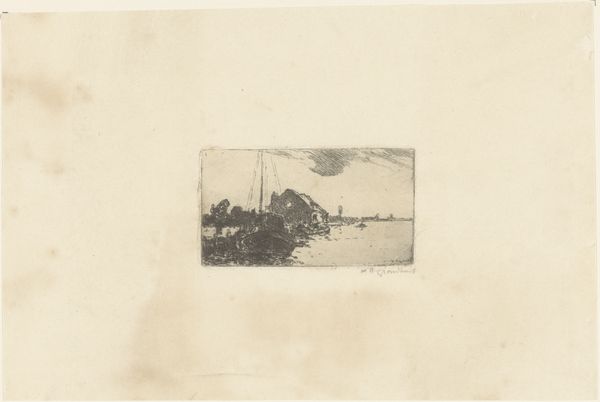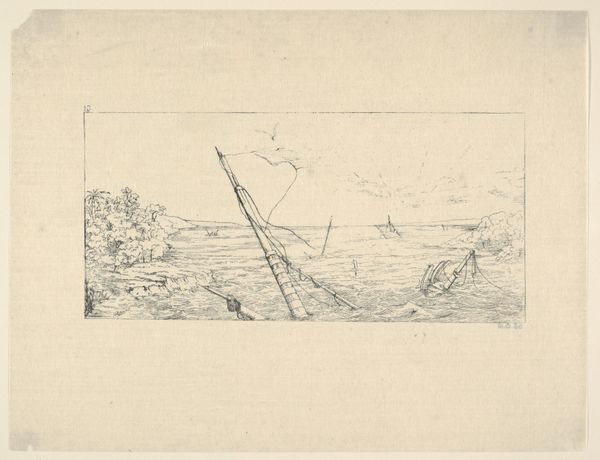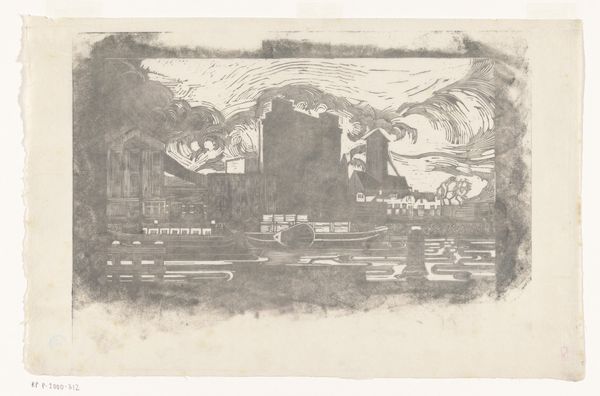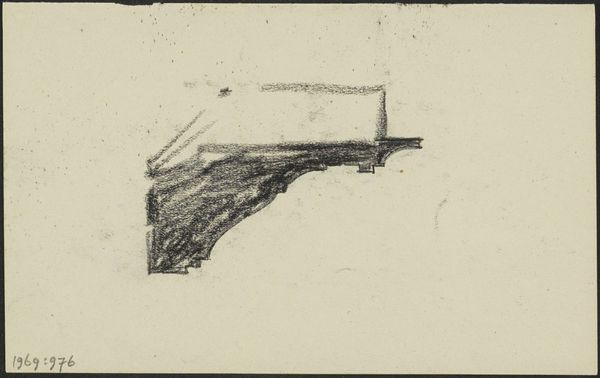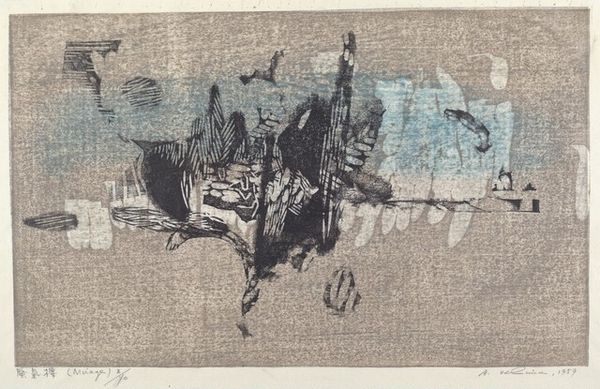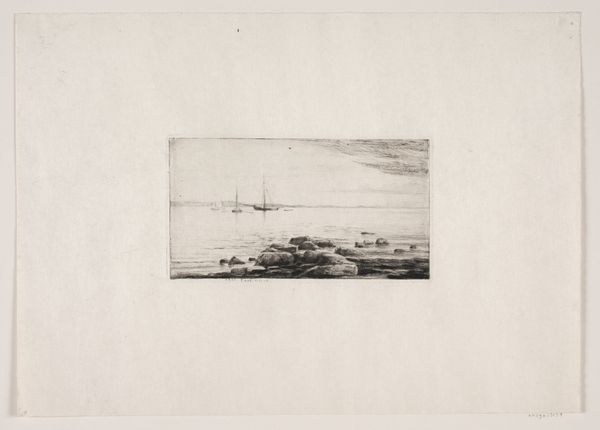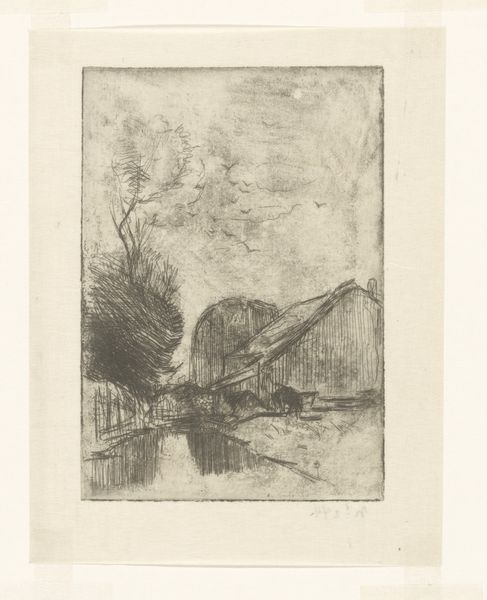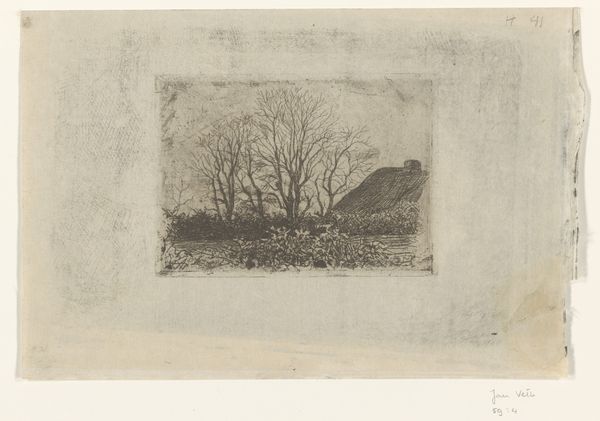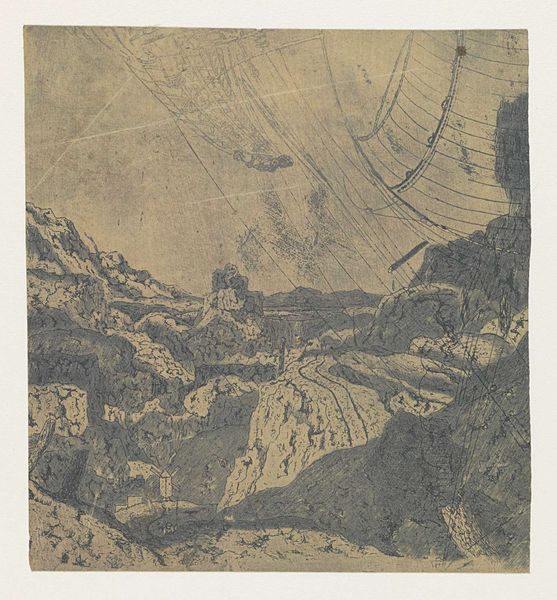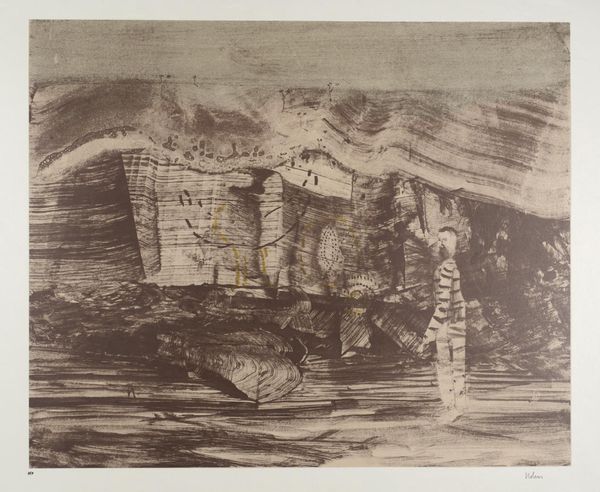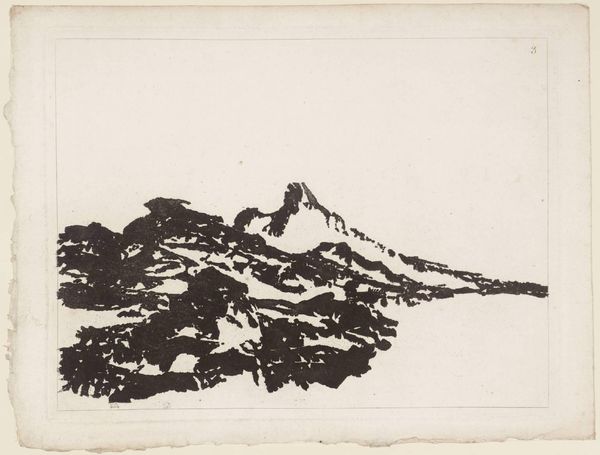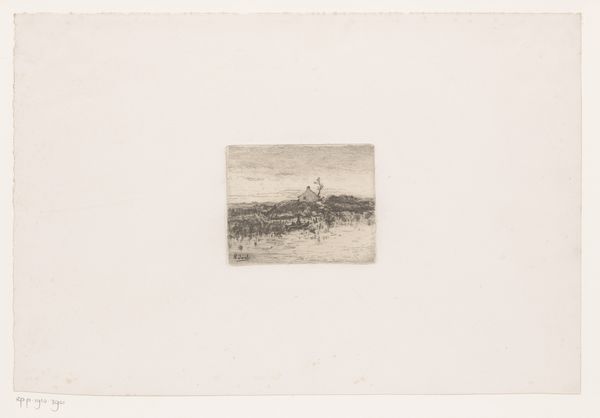
print, etching
# print
#
etching
#
pencil sketch
#
landscape
#
united-states
Dimensions: 11 7/8 x 7 15/16 in. (30.16 x 20.16 cm) (plate)18 1/16 x 13 1/2 in. (45.88 x 34.29 cm) (sheet)
Copyright: No Copyright - United States
Curator: Let's take a look at Philip Little's 1916 etching, "O'Clock in the Morning," here at the Minneapolis Institute of Art. It's a smaller print, just under 6 by 8 inches. What's your immediate reaction? Editor: Oh, it has this dreamy, almost melancholic feel. It’s like a scene half-remembered. The textures are so subtle. It pulls you into this quiet dawn, but with an edge, like the world is holding its breath. Curator: That’s perceptive. Little was part of the American etching revival, responding to the increasing industrialization of American life with a focus on more traditional, rural, and sometimes nostalgic landscapes. He was deeply interested in capturing mood through light and atmosphere, evident in this print's shadowy foreground against the lighter horizon. The title also alludes to a specific time of day, one when most are still asleep, adding to its contemplative nature. Editor: Exactly, it evokes a very specific atmosphere! There’s a real romanticism here, but not saccharine. It's romantic in that nineteenth-century way, dealing with nature, solitude and a trace of that fin-de-siècle anxiety of being on the cusp of the modern world, with a very soft but evident style influenced by pencil sketches. Is it possible Little wanted us to look into the soul of dawn? Curator: Quite possibly. Prints like these were more accessible to a broader public. They played a significant role in shaping American visual culture by romanticizing the past during this era of transformation. In that respect, his atmospheric impressions reflect anxieties about lost connection to a vanishing rural America. Editor: And there's something timeless about that anxiety. The texture, the choice of subject... It feels very "of its time," but also universal in its quest for peace. That’s what strikes me, it portrays a search for the immutable in an unstable era. Curator: Precisely, and prints like "O'Clock in the Morning" become significant markers, embodying cultural anxieties alongside aesthetic ideals. A snapshot into how people dealt with rapid socio-political change at that moment in the US. Editor: Well, I could stare at this all day. There is this intriguing contradiction and paradox to the work that lingers. Curator: Yes, and perhaps a mirror reflecting back to us how we still wrestle with similar questions today.
Comments
No comments
Be the first to comment and join the conversation on the ultimate creative platform.
